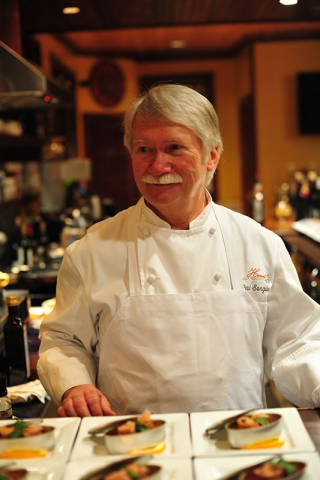
Culinary Educators Share Societal Responsibilities
09 April 2018Incorporating nutritional concepts to improve students’ health and the public they will serve.
By Paul Sorgule, MS, AAC
Thirty percent of the American population is obese and five percent are morbidly obese. Twenty-nine million Americans have diabetes and over 75 million suffer from hypertension that can lead to heart disease and stroke. Almost 39 percent of Americans will develop some form of cancer during their lifetime. Also, what is just as disconcerting is the fact that almost 13 percent of Americans are food insecure.
What is the common denominator? A significant portion of our population is food illiterate, not knowing or seemingly not caring, what they should eat and how to prepare it. Although these issues may, in some cases, be connected to levels of poverty, they are not exclusive to specific socio-economic levels. Proper nutrition, the relationship of food to health, and understanding how to prepare a balanced meal with fresh ingredients eludes far too many people.
Culinary educators have an opportunity to address this situation on many levels. The question is: Should this be part of our responsibility? I would dare say that the opportunity is also a definitive moral and ethical obligation.
The federal poverty level in the U.S. for a single person is $13,860 and for a couple is $18,670. Think about that for a minute - $13,860. Aside from workers employed by federal agencies or working for companies on contract with federal programs, the U.S. minimum wage has not changed since 2009. An employee, as of the end of 2017, who works full-time in a minimum wage job, would stand to make $15,080 per year. This points to the number of individuals in the country that are at or close to the poverty level. What level of proper nutrition is possible at this income level?
A regimen of well-prepared foods and moderate exercise can help ward off the threat of a life sapping disease. Work demands and decreasing personal time lead people of every economic level to turn to convenience foods or a steady diet of restaurants. The level of nutrition-related disease in this country has grown dramatically over the past decade. Education and a commitment to weaving solid nutritional cooking processes into our restaurant experiences is a key to “Making America Healthy Again.”
The following are some examples of how we can make a difference.
The Health and Wellbeing of Our Students
Every culinary program incorporates some level of nutrition education, but how many actually carry the concepts of nutrition into their lab courses and training restaurants? Considering most of our students are tactile learners who digest concepts when they are able to produce tangible results – nutrition and its benefits will truly be understood when they are applied. Focusing on fresh, properly grown and handled raw materials, using a balance of healthy cooking methods, reducing dependence on fat and sodium to build flavors, and working with reasonable portion sizes can help our own students maintain a healthy body and build positive habits that will carry them through life. Give your students a chance to track their caloric, fat, and sodium intake and become ambassadors for eating well.
The Health and Wellbeing of Restaurant Customers
There is no question that patrons who dine with us in restaurants are seeking beautiful and flavorful food. These characteristics of the dining experience appeal to the senses of sight, smell, taste, and touch (texture). This is a given responsibility that we all accept. At the same time our guests expect the food they consume will generally be good for them. The need for this is apparent and the ability to make it happen is in the hands of the chef. As educators we share an opportunity and a responsibility to teach our students well and in turn have a dramatic impact on the lives of every guest who chooses the restaurant experience.
The Health and Wellbeing of a Nation
A successful nation is built on the shoulders of a healthy, physically fit and truly content population. When a population is fed well, with wholesome ingredients that are handled with care, and passionately prepared with everyone’s wellbeing in mind, then the stage is set for great results.
Demonstrating by example the importance of buying fresh ingredients through the right source committed to providing those items that are free of potentially harmful chemicals; handling and preparing dishes without excessive use of fats, sugar, and sodium is the opportunity and challenge before us. As educators and chefs the example we set does have an impact, the model we create does have an impact, and graduates of our programs who understand and practice proper nutrition can change the world. Who is better prepared to meet this challenge than culinary educators?
Look at your curriculum and ask the question, “Are we doing all that we can to improve the health of our students and the public they will eventually serve?” We all share responsibility for positive outcomes.
PLAN BETTER – TRAIN HARDER
Paul Sorgule, MS, AAC, president of Harvest America Ventures, a mobile restaurant incubator based in Saranac Lake, N.Y., is the former vice president of New England Culinary Institute and a former dean at Paul Smith’s College. Contact him at This email address is being protected from spambots. You need JavaScript enabled to view it..
